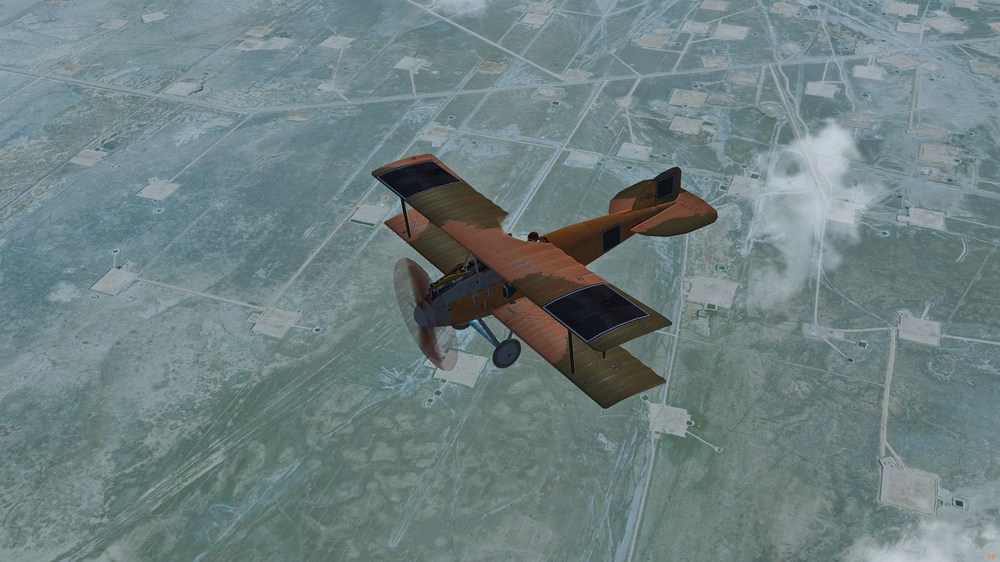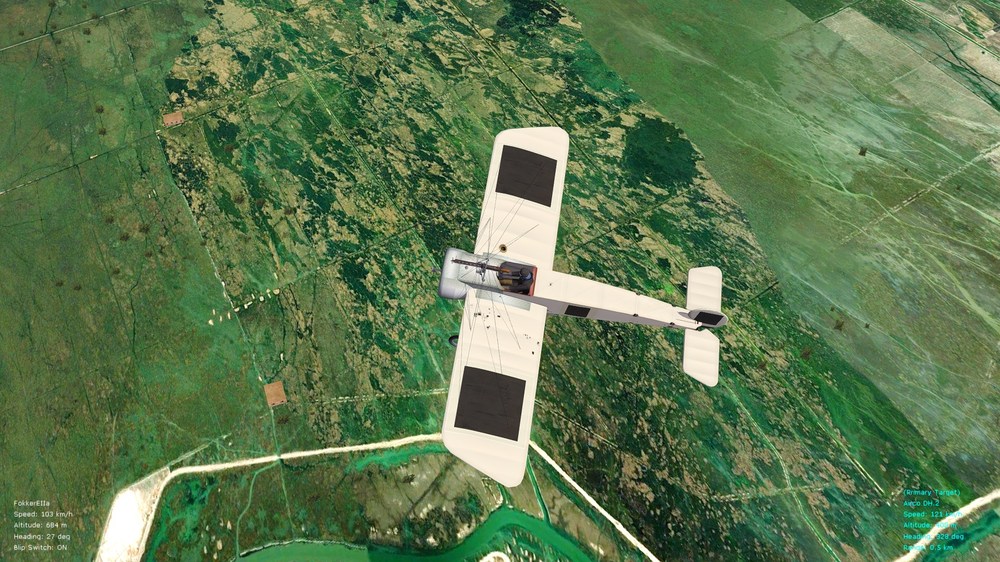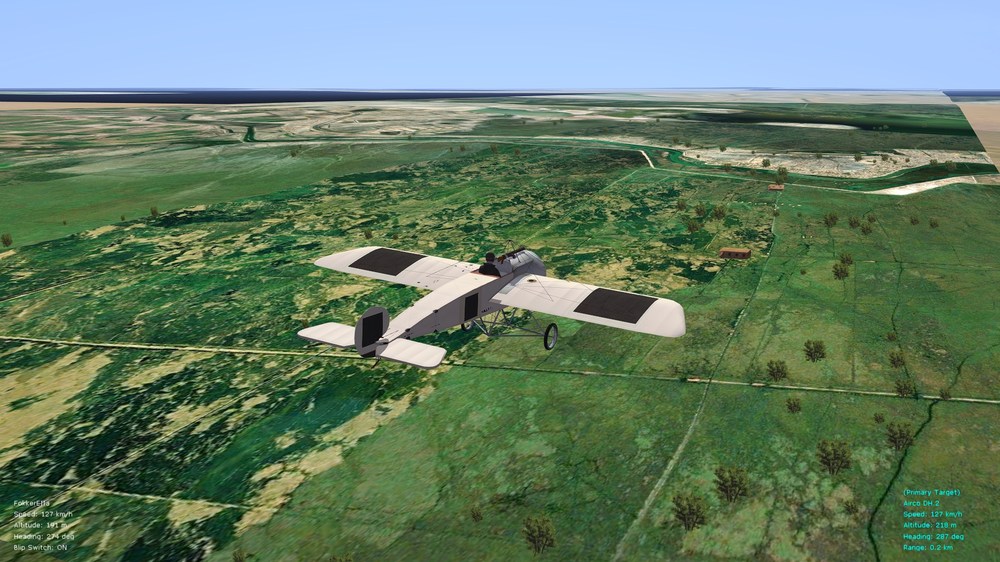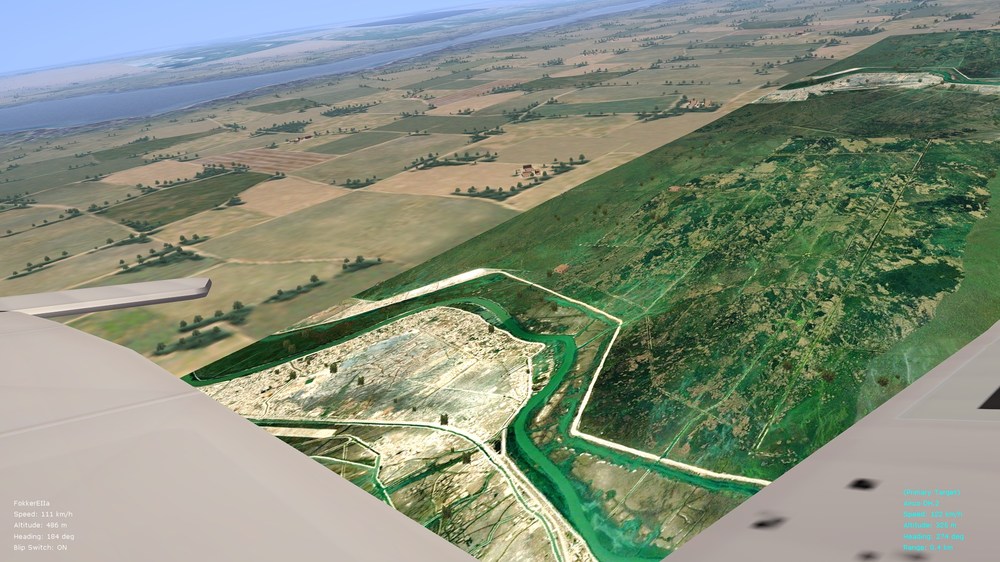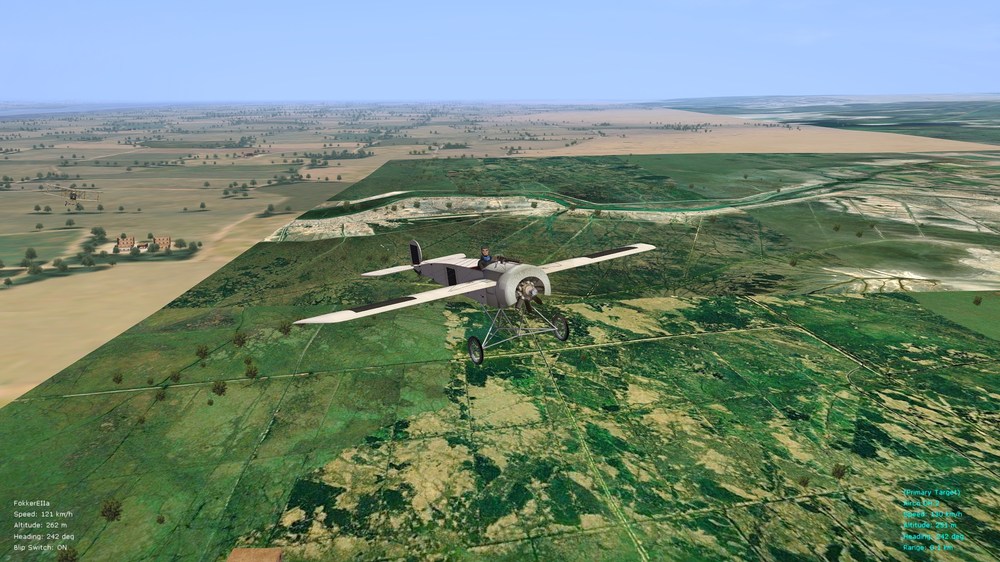-
Posts
988 -
Joined
-
Last visited
-
Days Won
2
Content Type
Profiles
Forums
Gallery
Downloads
Store
Everything posted by VonS
-
-
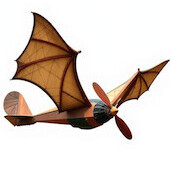
Screenshots of all the aircrafts I have...
VonS replied to gterl's topic in Thirdwire - First Eagles 1&2
Most should be available in the file downloads sections for FE and FE2, on CombatAce. If any are missing from CombatAce, such as the early B.E.2(a), early Aviatiks and whatnot - those are most likely to be found on the A-Team Skunkworks website (see the "WWI Planes" menu while there). I have no idea, however, if the Skunkworks website is still active or if they even accept registration anymore. Cheers & good flying to you, -
Perhaps also worth taking inspiration from is mother nature itself - I recommend thinking of insects and birds. For example (from lowest to highest rank, in terms of overall flight stability): 1) mosquito 2) grasshopper 3) bumble bee 4) dragonfly 5) flying squirrel 6) flying fox 7) robin* 8 ) hawk* * Note: begin counting from "bumble bee" if you'd like to include robin and hawk in the hierarchy. Cheers all & good taxonomizing to you,
-
There's a real charm in FE2 that I never found in RoF (even when RoF's modded); and while the WoFF series is the gold standard for campaigns, FE2 is much more convenient to jump into for a quick mission or two, or even for rolling single missions. Also, the AI and FMs, I think, are as good (if not better) than in any other WWI sim that I've tried out, old or new. For those interested, there are now 30+ representative videos of fully-modded FE2 on my little YouTube channel, FE2 on a Mac - I'm pleasantly surprised by what this sim still has to offer. Latest clip below, of a Fokker B.II attacking a Caudron G.4 - the B.II is ancient (by Bortadafarm) but, tweaked, it still works in FE2. For other tips regarding the B.II's data ini - check over the info. in the video description. Cheers all & good flying to you in FE2,
-
@OP, Patch 1.25 is a free update patch for the base install of original (Phase One) WoTR - "Battle of Britain." By "new patch" you are most likely referring to the BoF (Phase Two) expansion to WoTR - "Battle of France." BoF requires base WoTR to be installed, and is a paid upgrade. Free patches for BoF are separate from free patches for base WoTR (as of this writing, the latest free BoF patch is at ver. 1.23). Recommended is to see the official page for WoTR, for more info. (in particular see the "store" and "downloads" tabs located at the top of the website). Cheers & good flying to you,
-
Brief public service announcement for all aficionados of FE2 - have recently opened a small YouTube channel called FE2 on a Mac, where I can occasionally post clips from FE2, WoFF, and FG (FlightGear), regarding various tweaks, mods, and whatnot. For relevant links to my various FE2, WoFF, etc., mods, see the following post on the FG forums. Cheers all & good flying to you,
-
A sound theory and entirely possible, perhaps worth looking into at any rate - some texture files (or naming conventions) initially available in CFS3 may have disappeared and/or gone missing over the decades, as the WoFF series was developed further and further (see in particular the different terrains/textures in use across various generations of WoFF, such as the older OFF, then original WoFF, then the UE/PE-era, then BH&H2, etc., etc.). The oddity with black river textures showed up, as far as I remember, sometime around 2020 or 2021, give or take a year. So, to conjecture, it may have something to do with a newer generation of terrains in WoFF that showed up around that time and that calls up long-ago-disappeared files, file names, and whatnot; or, it may also have something to do with the generation of AMD DLLs that showed up around 2020; it may also be a combination, of course, of the factors outlined above. I am on the ver. 17.x.x AMD DLLs on my 2013 Mac Pro (2015 refresh, technically) - and have found that these DLLs work best, on AMD, with WoFF. This also requires that the venerable version 1809 of Windows 10 Pro be used. Moving to the latest iterations of Win 10, for example, limits you to the ver. 19.x.x AMD DLLs (or newer); the ver. 19.x.x DLLs barely play well with WoFF - the ver. 20.x.x DLLs (or newer) do not play well - expect to see terrain anomalies if using those. At that stage, you are probably better off running WoFF on team green (i.e., nVidia). Good tweaking to you in the WoFF series,
-

does anyone here use flightgear?
VonS replied to buccaneer4499's topic in General Flight Sim Discussion
I use a heavily-customized install of FG ver. 2020.3.19. For a free sim, it's pretty good and I enjoy it - I used to have a thread on FG installation tips (on AMD video) on CombatAce, but I re-posted a more compressed version of some of those tips over here, on the official FlightGear forums, since most FG-ers visit that forum anyway. I recommend advertising your AI-traffic-related topic for FG on the official FlightGear forums - but feel free to post here also if you like. Cheers, -
I continue to fly FE2 semi-regularly, time permitting. I usually switch back-and-forth between modded FE2 and my hybridized WoFF install (backport of PE-era terrains and BH&H2 aircraft into WoFF.exe version 4.18, the last "deadly trees and fences" edition of WoFF). Have also been spending the last year or so tinkering with some FM mods for FlightGear, and terrain/FPS optimization tweaks -- see this link if interested in what is going on there. I also did a few experiments with photo-scenery and FE2, with samples available under this thread. I will consider experimenting further with that -- since I like the ground tile improvements that it offers. In other news, development on the Bleriot XI is now in its later stages -- I however don't know about the specifics of the project since I am no longer involved in its day-to-day doings (the FM is done for the aircraft, by the way). If interested in details about the Bleriot XI project, possible release dates, etc. -- recommended is to contact the developer of the 3D model (Swambast) directly. Cheers all,
-
Recommended is also to post here under the official RoF forums -- your question might get addressed more quickly that way. As far as I know, the eastern front was never fully implemented in any version of the PWCG - thus the peculiarities, of aircraft sometimes spawning inside of tents, on storage boxes, etc. The problem may be less noticeable on the eastern front in the beta ver. 3.x.x of the PWCG than in ver. 16.x.x -- but 3.x.x has its own problems, since it was more so optimized for the modern IL2 series. RoF, even with the venerable ver. 16.x.x of the PWCG, excels best at western front action (and squadron options). For good eastern front variety, as well as a middle eastern front and other exotic destinations - permit me to recommend First Eagles 2 (modded fully, it's the most expansive, theater-wise, of the WWI sims that are available). Cheers,
-

WOFF BH&H-II and OTT-Mods: There (list closed)!
VonS replied to Becker02's topic in WOFF/WOTR - FAQ/Technical Issues
@warrior, files hosted on CombatAce require a subscription fee to download, as of Dec. 27, 2024 (see this post for more info.). For my various mods for the WoFF series, etc., see the info. under the "about me" tab of my main CombatAce profile. Good flying to you, -
For FE2, I would definitely recommend gTerl's excellent, various Italian map terrains (as indicated above). Also very good are Stary's enhancements to stock western front terrains in FE2 (the latter were done for FE/FEgold, but work just as well in FE2). Regarding plane mods, I suggest looking at Stephen1918's hangar - superb and rare WWI aircraft may be found there, such as the Siemens-Schuckert D.I, etc. For flight model/damage model tweaks and enhancements, as well as for flight models to several beta aircraft done by Geezer years ago and never fully completed, recommended is to check the "about me" tab under my main CombatAce profile for more info. and/or mod information. FE2, properly modded, has some of the best flight models in any WWI flight sim (including when compared with Rise of Flight). Good flying to you,
-
Hello @Becker, BuckeyeBob's historical weather mods, as well as his cloud mods, are not compatible with the OTT expansion. As per Winding Man, the weather system has been changed/redone entirely in OTT. BB's weather/cloud mods continue of course to function well in pre-OTT versions of the WoFF series. In terms of the other mods, I'm sure the other modders will pitch in with helpful info. (technically, JJJ's mods were never updated for OTT, so definitely be careful if loading those in OTT, etc.). Cheers to you,
-

WOTR GPU Tuner Patch, FM Tweaks, etc.
VonS replied to VonS's topic in WOFF/WOTR - FAQ/Technical Issues
Brief update to this thread -- an Enhancement Package (with minor shader tweaking, improved FPS, etc.) has been released recently for the "Unfriendly Skies" upgrade to WoTR BoF. Recommended is to check over this lengthier post for more info., and to follow the links contained therein to download the relevant package. Cheers & good WoTRing to you (in unfriendly skies),- 5 replies
-
- wotr
- wings over the reich
- (and 4 more)
-
Hello Tonci, excellent catch there with those strange .mos files -- perhaps that will be the ticket for using newer versions of the AMD DLLs with the WoFF series. Here's hoping that it all pans out well. In terms of .mos files themselves, I haven't researched how the WoFF (CFS3) engine actually uses them, but .mos usually refers to "Leaf camera raw file" (i.e., raw camera binary format developed by Leaf Imaging). To convert .mos files to other image formats, check over the program called Filestar* (the free version seems capable enough --- see this link). NOTE: see Pol's response below mine -- the .mos files used in the WoFF series are not raw image files, but instead data files that control texture overlays and other related details. (Thanks Pol for the clarification.) Cheers,
-

RoF United Ed. AI/DM & Other Mods. (Consolidated)
VonS replied to VonS's topic in ROF File Announcements
Glad that it solves the problem with the PWCG. Unfortunately I can't help with stock career oddities in RoF -- my various mods were only tested in quick combat mode in RoF, as well as using ver. 16.x.x of the PWCG. It's possible that incompatibilities emerge between my AI mod(s) and the stock career options in RoF, as well as with the newer/beta ver. 3.x.x of the PWCG. If flying using the stock career options, recommended is to avoid using the AI mod(s), but the DM mod should be fine to use. Cheers,- 18 replies
-
- rise of flight
- rof
-
(and 8 more)
Tagged with:
-

RoF United Ed. AI/DM & Other Mods. (Consolidated)
VonS replied to VonS's topic in ROF File Announcements
Hello Rwmierzwa, look for the entries called "MaxTurbulence" and "MaxWind" in the "RofCampaignSpecific" files provided in either of my RoF-mods packages that are available under the first post of this thread. Those values can also be changed from within the settings panel of the PWCG for RoF - but recommended, especially if running my "Version 3" modulations files - is to change the numbers for any entries manually (from within the "RofCampaignSpecific" files themselves). Cheers,- 18 replies
-
- rise of flight
- rof
-
(and 8 more)
Tagged with:
-

RoF United Ed. AI/DM & Other Mods. (Consolidated)
VonS replied to VonS's topic in ROF File Announcements
Hello Hiuuz, the AI takeoff problem is largely linked to strong winds and/or turbulence. Might be the case that some of the weather values in my AI mods are making it difficult for the AI-flown aircraft to operate always (and consistently) in very rough weather, especially with the Albatroses for some reason. Recommended is to reduce the turbulence value to 2 or 3, also wind speeds to less than 8 or 9 m/s (such values are close to stock) - in order that the AI always takes off easily. It's unfortunate that the AI is so limited in its takeoff routine by stronger weather values in RoF - also troublesome are AI landing procedures even with stock weather (I don't know if landing routines were ever improved in the FC series since I never bothered with the latter). If I ever decide on tinkering further with an AI mod for RoF - I will see if anything more is possible with the AI behavior. My general observation at this point in time is that nothing further can be done with the AI because the sim is so locked to more extensive (and much needed) modding. Cheers,- 18 replies
-
- rise of flight
- rof
-
(and 8 more)
Tagged with:
-
One more small update for this thread before I retreat temporarily into work mode - as per relevant info. in my previous post, have now done further tests and it is indeed possible to load DDS terrain files directly into FE2 (simplest is to point to relevant DDS files from within the general data ini file that resides in the "Terrains" folder). Having said that, one peculiarity about loading of DDS terrains, instead of BMP ones - is that trees, buildings, other objects, etc., do not show up anymore. Once DDS files are converted to BMP format, on the other hand (as seen in the pics. in my previous post) - trees and buildings once again nicely come through. So, unlike FlightGear that siphons in PNG-to-DDS converted satellite imagery (when its photo-scenery option is set up), FE2/SF2 would require conversion of DDS to BMP files, so as not to smother out the added immersion of objects and trees already present in/on the ThirdWire terrains. Couple of pics. below with DDS ortho/photo-scenery being tested in the Mesopotamian theater in FE2. Graphics look quite good to me but unfortunate is the loss of trees and whatnot - so it's back to conversion to BMP format. Also, as evident in the pics. below, with careful choice of satellite photos the effects are not too jarring between different tiles when all are placed together. Not too bad for initial, manual placement of tiles - but very tricky to place correctly once you get towards rivers, seas/oceans, shorelines, and so on. The job of a terrain modeler is not an easy one - virtual drinks on the house for all terra-formers, also for object-placement ini file crunchers. One thing I particularly like about the satellite photo-scenery options in FlightGear is that, if you like, you can set things up in such a way that the scenery downloading/siphoning mechanism follows your aircraft as you fly, and nicely drops correctly placed terrains below, around, and in front of your flying path. Such a feature requires, once the photo-scenery siphoning system is set up, that you make sure to feed the following command/property to FlightGear itself: --telnet=5000 The photo-siphoning mechanism then connects to local IP no. 127.0.0.1 (i.e., "localhost") on port 5000 and "feeds" satellite imagery to FlightGear as soon as terrain images are downloaded. Such an automatized process makes unnecessary the hassle of manually attempting to place photo-scenery tiles in correct places and positions. (Scenery can also be saved locally, for later offline use - without always having to re-download images.) While there is no multiplayer capability in FE2 - theoretically, if the "telnet=5000" command could somehow be fed to the FE2.exe itself - then a simple re-duplication of one of the more accessible photo-siphoning mechanisms used by FlightGear (e.g., the Julia programming app linked to a photo-scenery Julia add-on) - might work for FE2 too. Will post further thoughts in this thread if I find that there is any way to get the photo-scenery siphoning system to "talk" (establish a telnet connection) with FE2. Otherwise, it will be a very slow process of manually picking through, and choosing, satellite tiles - and that will be called up via the general data ini that's in the terrains folder. Cheers all (& good dreams about auto-loading of satellite imagery in FE2),
- 3 replies
-
- 5
-

-

-
- satellite scenery
- photographic scenery
- (and 4 more)
-
Hi All, Have been doing a bit of tinkering lately with my FlightGear install - and results are pleasing enough in what is a free, open-source flight sim. Managed eventually to get accurate photo-scenery working in FG, which is a noticeable improvement over the stock (dated) scenery that has been available in that sim for years on end (see pic. below for photo-scenery at work in FG, in this case in the Mesopotamian/s. Iraqi area; the Alb. D.I is a re-skin and FM-overhaul of a model done by Lester Boffo). On a hunch, I then converted a bunch of the photo-tiles from FG (stock format is DDS) to BMP format - so that they become visible in the FE2 terrains folder - and it does indeed work - but would require careful, aesthetic choices regarding what tiles to replace in the terrains folder, such as farms, cities, deserts, etc. - for best cohesion and not too many jarring disconnects between tiles. Nice to see that stock trees and buildings are populating over the satellite/ortho-terrains too, in FE2. Photo-scenery is simply an improved "satellite" carpet that covers the stock scenery and terrain framework in FlightGear - and by extension works the same way in the ThirdWire sims but requires manual conversion to BMP format and manual placement in the terrains folder (perhaps the DDS format would work too, but I didn't bother tinkering with the various settings/text files this time around in the terrains folder). The other good thing about FlightGear is that it is fully under the GNU GPL (General Public License; i.e., "copy-left" license) - so there are no copyright problems that I know of if one borrows such ortho-scenery for FE2 too (haven't bothered to test with SF2). And if working on such a terrain swap as a personal project - that is of course even simpler. A few representative pics. below with just a few ortho-scenery tiles placed over Stephen1918's upgrade of the Mesopotamian theater for FE2. Results look pretty good, particularly when flying higher up, and I haven't noticed any FPS drop with the photo-scenery tiles loaded. Some old tiles are still in place in the pics., for comparative purposes. Any empty areas are where I didn't bother to load tiles. Anyway - I hope you find this post interesting - it's perhaps the "cheapest" way of upgrading tiles across the various theaters available for FE2. If I find enough free time I might tinker further with this side-project; will post comments if the results prove particularly successful. Cheers & good flying,
- 3 replies
-
- 9
-

-

-
- satellite scenery
- photographic scenery
- (and 4 more)
-
@kcoun, a) if you have the "historical weather" option enabled in the WoFF series you will often see lots of clouds/bad weather, as was the case frequently in WWI (the historical weather option can be turned off, of course); also possible is to load various ReShade profiles to spice up the colors and to improve spotting (see this link for various representative pics with customized visuals, particularly the three pics near the bottom of the page, located after my long post regarding a dual-CPU computer build) b) UE/PE refers to two previous versions of the WoFF series - UE is "Ultimate Edition" and came out around 2016; PE is "Platinum Edition" and was an add-on to UE that came out sometime around 2019 if I'm not mistaken; neither of those previous versions are available for sale anymore; the latest version is BH&H2 - "Between Heaven and Hell II" (take note that several of the pictures available under my various posts may be from the UE/PE-era or from one of my hybridized WoFF installs, although I also run BH&H2 - I usually indicate what version the pics are from, per post, to minimize confusion) Good flying to you,
-

RoF United Ed. AI/DM & Other Mods. (Consolidated)
VonS replied to VonS's topic in ROF File Announcements
@Sabre, Here's a brief extract from the "Read Me" file located in the "consolidated mods'" files/folders - regarding the various PWCG modulations files: ----- The modulations files are "a series of 'RoFCampaignSpecific' files that should be installed, ONLY ONE AT A TIME, into the 'Pilot's Name Folder' of your RoF Campaign folder that is generated by Pat Wilson's Campaign Generator (ver. 16.3.x); you will find a series of files there, organized by period of war and by theater (whether eastern or western front); those files [...] change a variety of settings, ranging from AA gun frequency, distance between M.G.'s available on the front, chance of aircraft encounters, size of flights, also changes in aircraft/engine reliability, availability/number of observation balloons, and so on, depending on period of war; there will be noticeably less encounters with the enemy with those modulation files loaded than in stock form, in turn with greater difficulty of racking up large kill tallies, as historical, particularly on the eastern front." ----- That description is for the "version 2" modulations files that are included in the larger "consolidated mods" files/folders, by the way. For an even more hard-core experience, suggested is to download the "version 3" modulations files that are located as a separate download in the first post of this thread. See also the "Important Note" in the top post of this thread, regarding differences between the version 2 and 3 modulations files. You might also wish to check over this link regarding other info. about the various modulations files. Happy flying,- 18 replies
-
- rise of flight
- rof
-
(and 8 more)
Tagged with:
-
FE2 is still alive and well - more obscure than RoF and WoFF - although that may be a good thing. Let us know what kind of "augmentation" you are interested in - and perhaps some of the FE2 specialists will pitch in with good info. If interested in FM modifications/integrations of (and into) FE2 - suggested is to begin with this post, in particular the bottom link of that post that outlines what aircraft packages many of my FM tweaks correspond with. For terrain editing, placement of targets, modification and/or installation of airfield objects, and other misc. objects, I would recommend contacting Stephen1918 (he has developed many excellent aircraft models for FE2, as well as several, important airfield objects). Geezer is also an encyclopedia of FE2-related knowledge (terrain/airfield and aircraft modding and development) - but I don't think that he mods anymore for FE2 (or at least hasn't posted here in a couple of years). Cheers to you & good flying in the FE2 skies.
-
@toot, the general rule of thumb is that the physics/world model in SF2 (i.e., winds, atmosphere, flight dynamics, etc.) is best suited to jet aircraft and to some extent to fast(er) prop aircraft - let's say with a minimum speed of 400 kph or so. The simulated "world" in FE2 on the other hand caters much more effectively to slow(er) flying, and showcases better the flying (and fighting) characteristics of pre-WWI, WWI, and inter-war era aircraft of, for example, the 1920s (think "barnstorming"). To give an example of the different atmospherics and physics, an early 1950s (late model) F4U-5 Corsair has a historical top speed in the 750s kph in SF2, while, when dropped into FE2, it goes into the 880s kph. Recommended also is to check over this thread regarding swapping of aircraft from FE2 to SF2, and vice versa - sometimes such swapping works, but often it doesn't. Furthermore, FE2 has higher-quality terrains (smaller-sized terrain pieces, as far as I know) and more subtle fog effects, I think, than SF2 - such things help with immersion because most aircraft in FE2 fly fairly low - on the other hand, use of such terrains in SF2 would probably result in an FPS hit, and is not really needed for jet aircraft scenarios where everyone is usually flying high and at great speed. Cheers,
-
Indeed a shame - hardly any regular posts in the FE2 forums anymore. Hope everyone's doing well - haven't seen names like Geezer, Crawford, and others in these forums for years. Fully-modded FE2 is still my go-to sim for single missions with variety, and for tight-knuckle flying and dog-fighting - I'd say better than modded RoF, and also easier to set up and quicker to get into than the WoFF series (although the latter is definitely the gold standard for full-blown campaigning). Come to think of it, the WoFF forums on SimHQ have also largely dried up over the last couple of years. And DiD IV, the latest Dead is Dead campaign being run in WoFF (on their CombatAce forums) is pretty much literally DiD too (compared with DiDs II and III from several years back). Perhaps newer generations of simmers have mostly gravitated to multiplayer; or tablet/phone games have saturated the game market. I hope to return more regularly to FE2 in the future - there are a few aircraft that I haven't tweaked the FMs for, and I still want to try to introduce (if possible) realistic turbulence into the sim. Also, there's something wholesome and relaxing about tinkering with FE2 - the virtual equivalent of an old, wooden hangar or quaint WWI aircraft factory. Was busy for a while with AI mods for RoF (an exercise in frustration considering that RoF is so locked-down); and also re-discovered FlightGear in the meantime, a very nice, free sim for monoplane simulation and civilian flying - but be selective when choosing aircraft to fly in it. Some of the FMs are questionable, particularly for multi-wing aircraft. Recommended there is to stick to large airliners like the 707, 747, DC-10, also single-wing, small aircraft such as Pipers, Cessnas, Tecnams, gliders, and so on. (Thinking to myself: sure would be nice to introduce the live weather and advanced weather systems from FlightGear into FE2 - i.e., METAR system, also moisture formation, storms, and so on - although that would require some way of having an open connection to the internet, from within FE2, to siphon in live weather data per whatever location you're flying through in FE2 at any given moment, etc.) Cheers all,

